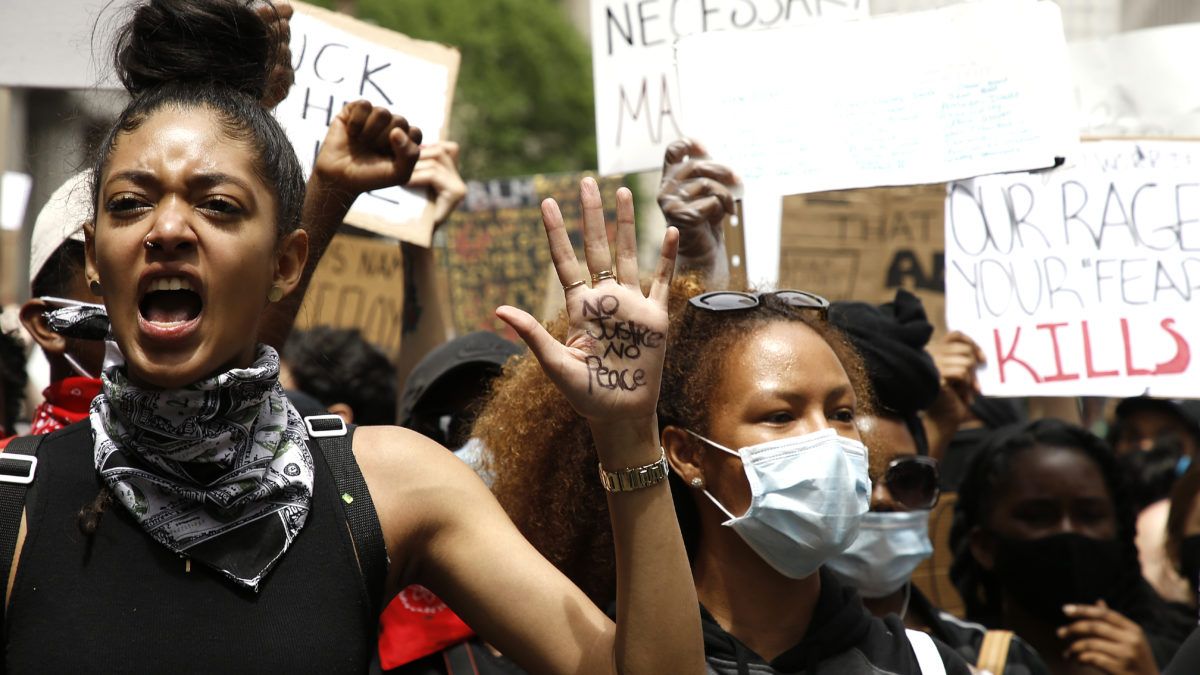
Americans are simultaneously joining marches and hunkering down for a long, hot summer of discontent.
I live on a short section of Bleecker Street in Manhattan that is in most ways completely unrepresentative of New York City, much less America. Yet as protests sparked by the police killing of George Floyd continue, and violence, looting, and vandalism spread across the country, the 500 feet traversed by my block may spell out the two most-likely futures for a country that seems close to experiencing its most violent season since 1968, when major riots seemed part of everyday life. Do you see today's protests as representing the nonviolent, righteous anger of brutalized minorities who have had enough and are now demanding an end to a murderous status quo? Or do you see them as unleashing anarchy and chaos while masquerading as social justice? How you respond to them not only says something about you but about where the country might end up.
At the west end of my block, Bleecker intersects with Lafayette Street; there sits Kith, a hip, expensive streetwear shop so popular that it used to meter guests in with a velvet-rope system like a trendy nightclub would. When the coronavirus lockdowns went into effect, clothing stores were deemed nonessential by the powers that be, so Kith locked its doors and emptied the store of all merchandise to prevent would-be thieves from breaking in. You'd walk by the windows and just see naked shelves where $300 sweatsuits and $50 knit caps once hung.
This past Sunday, though, the owners boarded up the windows with plywood, as if a hurricane were coming (many businesses throughout the city did the same). They shouldn't have bothered. On Monday morning, I walked by the store around 7 a.m. and saw that the plywood had been peeled back in places and some of the windows smashed. Kith merchandise bags were strewn out on the street.










